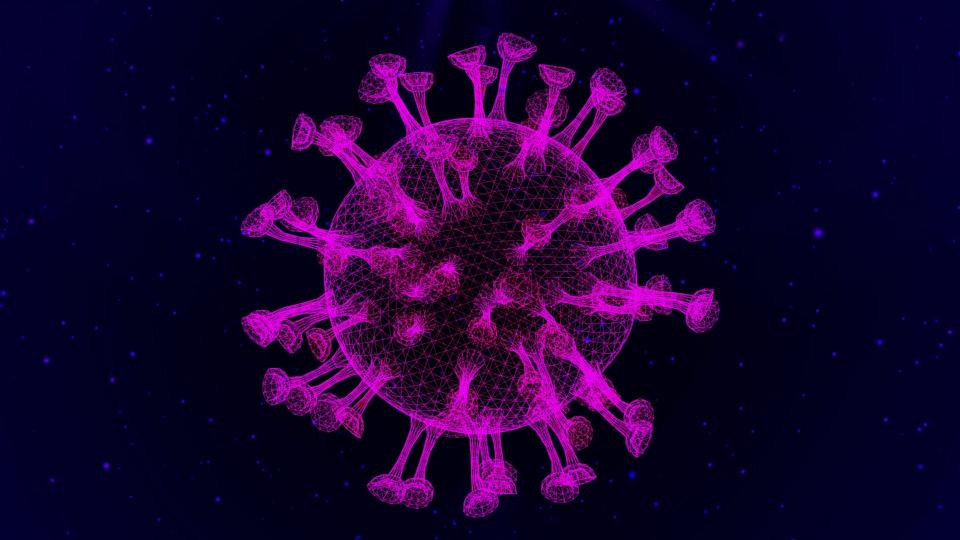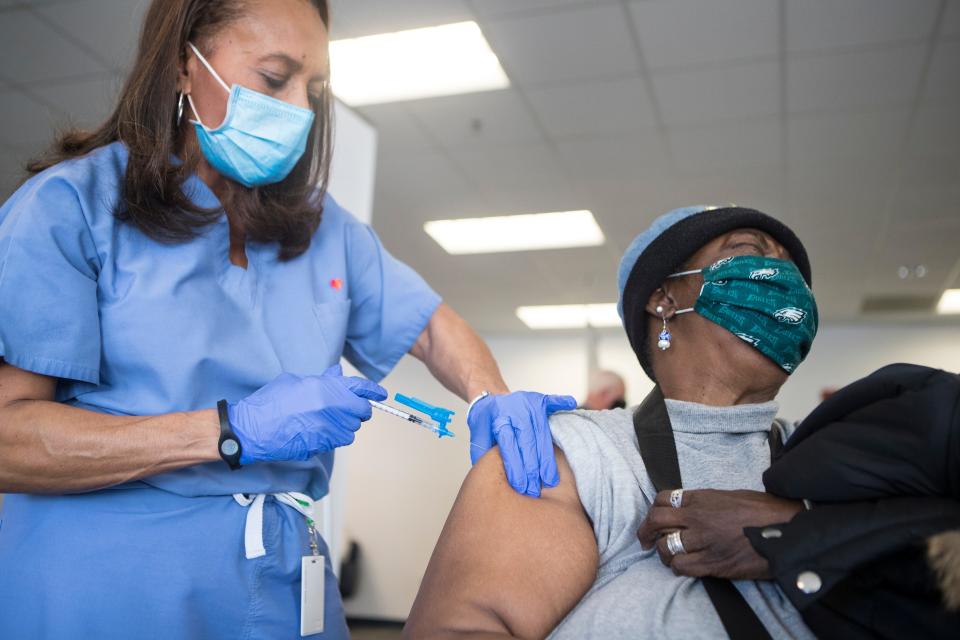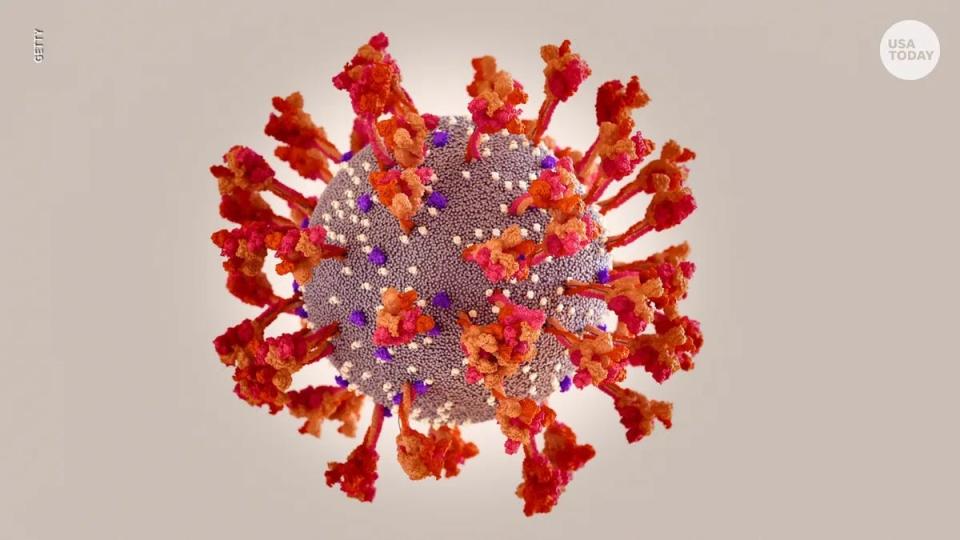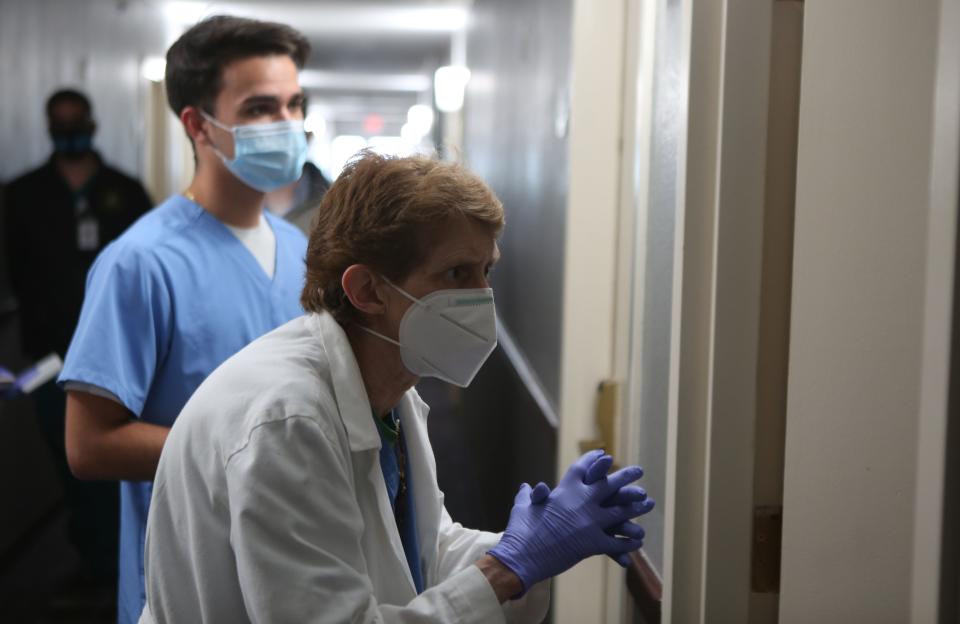FliRT, a group of COVID-19 variants, accounts for most US cases. How to stay safe
Heading into a summer, a new set of COVID-19 variants now accounts for most infections in the United States.
Here’s what you need to know to stay safe.
What are the FLiRT COVID variants?

The Johns Hopkins Bloomberg School of Public Health reports that “FLiRT” is being used to describe “a whole family of different variants – including KP.2, JN1.7 and any other variants starting with KP or JN – that appear to have independently picked up the same set of mutations.”
They are all descendants of the JN.1 variant, which has been the dominant variant in the U.S. for several months.
KP.2 COVID variant infection rates

The Centers for Disease Control and Prevention reports that, as of May 4, 22.5% of adults have received an updated 2023-2024 COVID-19 vaccine since Sept. 14, 2023.
Vaccine coverage increases by age, with vaccine rates highest among adults 75 years old and older. An additional 8.4% of adults plan to get vaccinated, according to the CDC.
The CDC Covid Data Tracker shows that KP.2 accounted for 28.2% of all COVID-19 cases between April 28 and May 11, surpassing JN.1 as the dominant variant in the U.S. JN.1 now accounts for the second highest number of cases, followed by other FLiRT variants.
Although KP.2 is the dominant variant in the U.S., overall COVID-19 transmission remains low at this team, and the popular variant is not causing an increase in infections, said the CDC in an emailed statement to USA Today.
Will COVID cases increase going into summer?
It’s possible that the FLiRT variants could drive a surge in cases, but experts continue to see “much lower numbers of cases of hospitalizations or deaths” than those recorded during the first couple of years of the pandemic, said Andy Pekosz, a professor in molecular microbiology and immunology with the Johns Hopkins Bloomberg School of Public Health.
While waves of infection are becoming smaller, it remains true that they continue to have the greatest impact on susceptible populations like people who are immunocompromised, the elderly and those with underlying medical conditions.
Health care news: Why health care groups continue to oppose a Delaware hospital cost review board
Fall 2024 COVID vaccine

The CDC recommended in February that adults 65 years of age and older get an additional dose of the current COVID-19 vaccine if they last received one in the fall. Summer guidance is still pending.
Public health officials like the World Health Organization and the Federal Drug Administration are now brainstorming the formula for updated vaccines that will be available in the coming fall. The WHO recommends using the JN.1 strain as the antigen for upcoming COVID-19 vaccines, which includes the FLiRT variants. The FDA has postponed its formulation meeting to allow more time to research which FLiRT variant will become the most dominant and subsequently serve as the vaccine recommendation, according to Pekosz.
New variants can, and are likely to, pop up after a vaccine recommendation is made, but the overall goal of the vaccine is to match as many circulating variants as closely as possible.
What are the symptoms of COVID?

People with COVID-19 can experience a wide range of symptoms from mild reactions to severe illness. Symptoms may appear two to 14 days after exposure to the virus, according to the CDC.
Possible COVID-19 symptoms include:
Cough
Fatigue
Fever or chills
Shortness of breath or difficulty breathing
Sore throat
Headache
Congestion or runny nose
Muscle or body aches
New loss of taste or smell
Diarrhea
Nausea or vomiting
As new COVID-19 variants arise, symptoms may change and can vary depending on vaccination status, according to the CDC.

If you have any of the following symptoms, these are emergency warning signs for COVID-19 and the CDC advises you to immediately seek emergency medical attention by calling 911 or calling ahead to your local emergency facility:
Trouble breathing
New confusion
Pale, gray, or blue-colored skin, nail beds or lips, depending on skin tone
Persistent pain or pressure in the chest
Inability to stay awake
Before getting treated, be sure to notify the phone operator that you are seeking care for someone who has or may have COVID-19.
Avoiding COVID, vaccine guidance
Experts continue stressing that, as with other respiratory viruses, keeping tabs on case rates where you live and travel, routinely getting tested and staying up to date on vaccination will increase your protection against COVID-19.
The 2023-2024 updated COVID-19 vaccines are a continuing recommendation to protect against serious illness from COVID-19 and restore protection that has decreased since a previous vaccine dose.
The most recent vaccine guidance from the CDC, updated on May 14, is as follows:
Children aged 6 months to 4 years old may need multiple doses of the vaccine to be up to date, including at least one dose of the updated 2023-2024 vaccine.
Everyone aged 5 years old and older should get one dose of an updated COVID-19 vaccine.
Adults aged 65 years old and older who received one dose of any updated 2023-2024 vaccine should receive one additional dose of the updated vaccine, at least four months after the previous dose.
People who are moderately or severely immunocompromised may get additional doses of the updated vaccine.
“The 2023–2024 updated COVID-19 vaccines more closely targets the XBB lineage of the Omicron variant and could restore protection against severe COVID-19 that may have decreased over time. We anticipate the updated vaccines will be better at fighting currently circulating variants,” the CDC said.
The agency adds that there is no “preferential recommendation” for one COVID-19 vaccine over another. Pfizer-BioNtech, Moderna and Novavax all have updated versions of the vaccine and are safe for use.
Pregnancy concerns: Mental illness is the leading cause of pregnancy-related deaths. What's being done
Should you get vaccinated if you recently had COVID?

Those recently infected with COVID-19 should consider delaying their next vaccination by three months, according to the CDC.
Although reinfection is less likely in the weeks and months following an infection, certain factors can increase the risk of infection, including:
Personal risk of severe disease
Local levels of COVID-19 in your area
Risk of disease in a family, household member or other close contact
The most common COVID-19 variant currently circulating
Got a tip or a story idea? Contact Krys'tal Griffin at kgriffin@delawareonline.com.
This article originally appeared on Delaware News Journal: COVID-19 variant FliRT accounts for most cases in US, vaccine info


